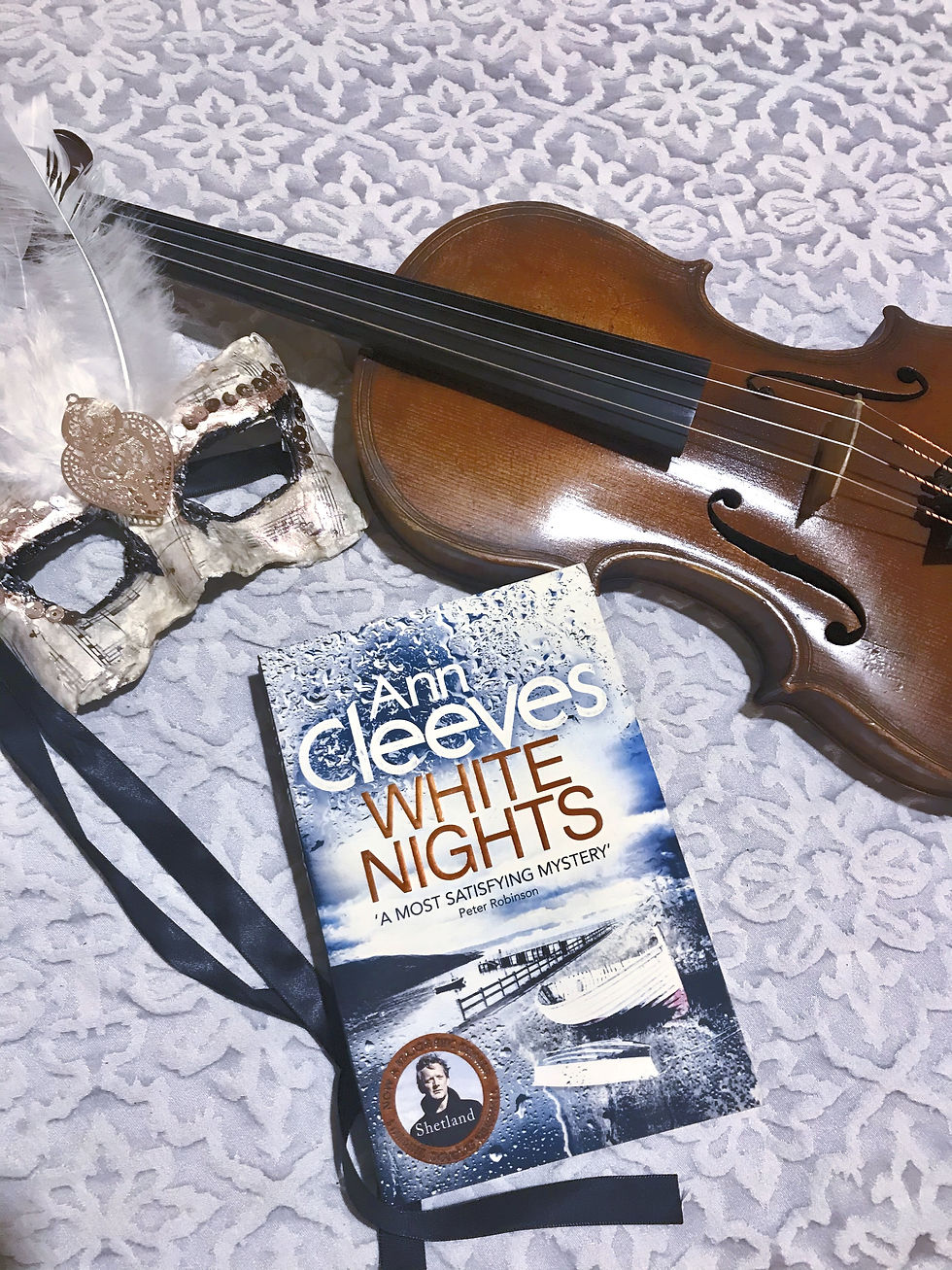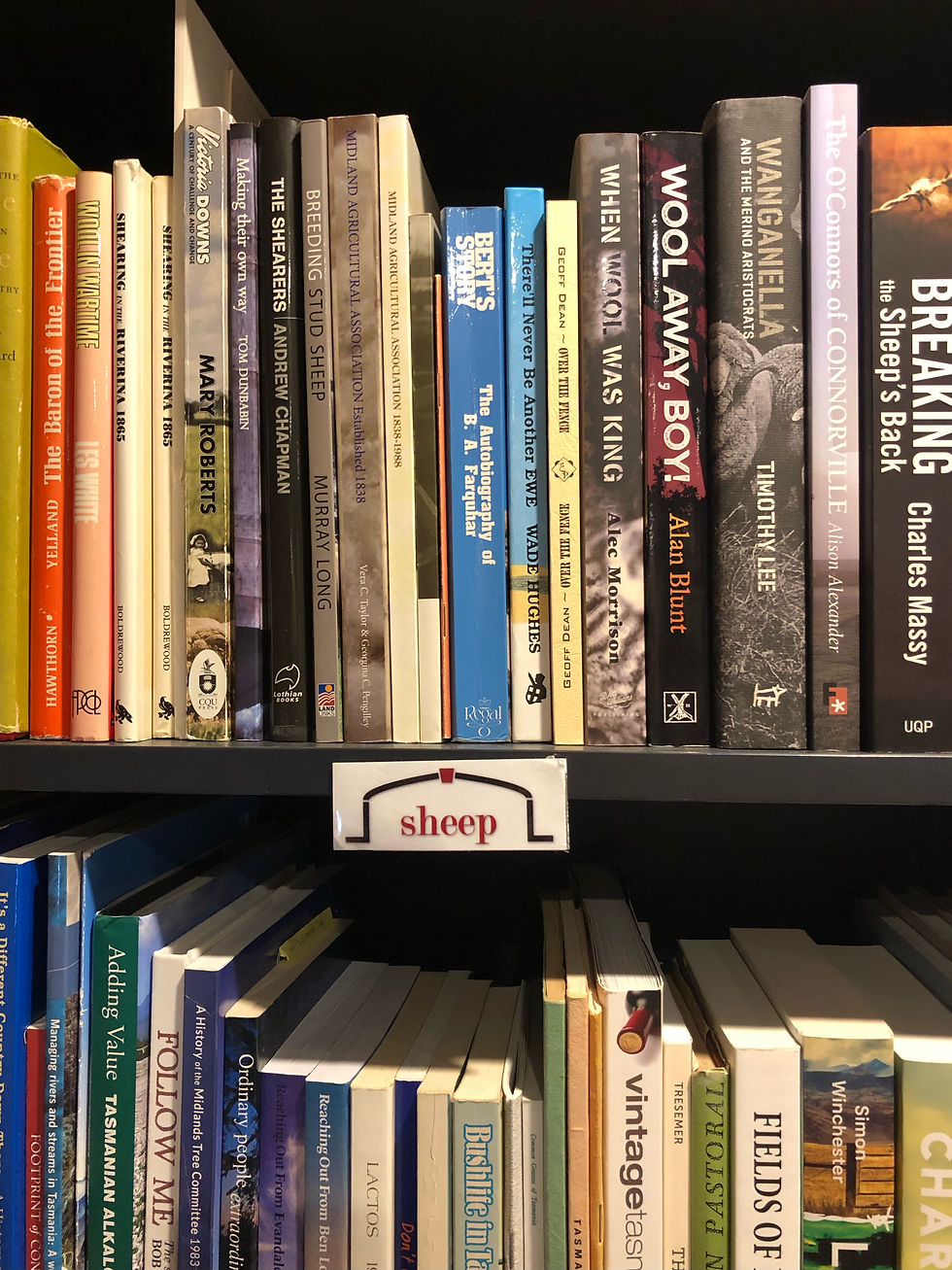The Simmer Dim
- Agatha Bellsy
- Jul 16, 2022
- 4 min read
Updated: Jul 25, 2022

There is something quite satisfying about finishing reading a book. Don’t you think? Especially when it’s a murder-mystery. After all, you are waiting to discover ‘whodunit’ and when it is revealed, it can either be a surprise or a confirmation that you are just as clever as you always thought. I’m sure you’d agree, both are quite happy outcomes.
The book I’ve just finished is called ‘White Nights’ by Anne Cleeves. The title in itself is evocative, and the whole story is set around the ‘simmer dim’ with ‘nature slipping from its unaccustomed pattern’ and when the sun refuses to set. There is an art exhibition, a woman in a red dress and a violinist.
I know. It conjures images of Paganini, devilish fiddle playing in Georgia, and I haven’t even mentioned the sheep… or the masks. The sheep weren't wearing them, although that would have made a good story too. One that could compete with “There’ll Never be Another Yeuw” by Wade Hughes, or “Wool Away Boy” by Alan Blunt. It’s hard to believe, but they are real titles, or real books. Just in case you don’t believe me, here is the evidence from a bookshop with a category devoted to the wooly-legged creatures.

Anyway, as Colin Dexter says on the back cover; ‘In true Agatha Christie style, Cleeves once again pulls the wool over our eyes with cunning and conviction.’ I agree, and I’m certain my eyes visibly widened when the murderer was revealed!
In fact, I felt I was guessing throughout the whole novel, which isn’t to say the clues weren’t there. I was just following along with Detective Perez with intrigue. The characters and all their secrets were all so interesting, I didn’t feel the need to try to solve it myself, in fact, I think that’s what made it more enjoyable.
However, that isn’t to say, my murder-mystery writerly brain wasn’t ticking away, wondering why it was so good.
So… I have made a list.
It’s easy to read, like an Agatha Christie. The sentences are not too long, the chapters are short and what I love most about reading books like this, is that I don't find myself stumbling over sentences. Achieving a flow in the story, I believe, takes great skill and I was drawn in immediately.
The structure follows the expected arcs and there are carefully planted red herrings to keep our sleuth occupied and it was all cleverly wrapped up in the end.
It adheres to the ‘rules of detective fiction.’
Huh? I hear you say. There are rules? Yep, turns out there are. They are even outlined so helpfully in Agatha Christie’s Complete Secret Notebooks: Stories and Secrets of Murder in the Making by John Curran. According to Ronald Knox’s (1888-1957) Detective story decalogue, they are as follows:
The criminal must be someone mentioned in the early part of the story, but must not be anyone whose thoughts the reader has been allowed to follow.
All supernatural agencies are ruled out as a matter of course.
Not more than one secret room or passage is allowable.
No hitherto undiscovered poisons may be used, nor any appliance which will need long scientific explanation at the end.
No Chinamen must figure in the story.
No accident must ever help the detective, nor must he ever have an unaccountable intuition that proves to be right.
The detective must not himself commit the crime.
The detective must not light on any clues that are not instantly disclosed to the reader.
The stupid friend of the detective, the Watson, must not cenceal any thoughts that pass throug his mind; his intelligence must be slightly, but very slightly, below that of the average reader.
Twin brothers, and doubles generally, must not appear unless we have been duly prepared for them.
Pretty extensive huh? I agree, a few of them are a little odd, but still, it’s quite interesting to see how they still apply today. White Nights was written in 2008, and as I was reading, I remembered the first rule. Although this was adhered to, it still didn’t make it obvious who the murderer was. Well, not to me at least.
There is another list by Van Dine which covers the above and includes the following:
There must be no love interest
The culprit must turn out to be a person who has played a more or less prominent part in the story.
A servant must not be chosen as the culprit
There must be but one culprit no matter how many murders are committed.
A detective novel should contain no long descriptive passages, no literary dallying with side issues, not subtly worked-out character analyses, and no ‘atmospheric’ preoccupations.
Furthermore, there should not be a seance to force a confession, a cipher/code letter, a hypodermic syringe or knockout drops or the comparison of cigarette butts.
Considering my own manuscripts, I was pleased that this book did also break the first of Van Dine’s rules. The others I believe held firm, and despite the absence of long descriptive passages, the atmosphere of the Shetlands came alive on the page… I could almost hear the sheep bleating.
So what did Agatha think of all these rules? Well, she broke almost all of them over the years, however she did agree that ‘economy of wording is particularly necessary in detective writing.’ This is essential in finding the right length of the story and achieving an overall flow, which I think is what has always attracted me to her writing. She also was well versed in Sherlock Holmes, and the novels by E.C Bently, G.K Chesterton, John Creasy, Rufus King, A.E.W. Mason, Edgar Allan Poe and Dorothy L. Sayers to name a few.
However, if there was one rule consistent with the golden age of detective fiction, and our contemporary cozy mystery genre, I wonder if it is the introduction of the culprit, early on in the piece?
So far, I believe the answer is yes… but having never really read any of the above authors, I’d better get started on finding out for certain.






Comentários